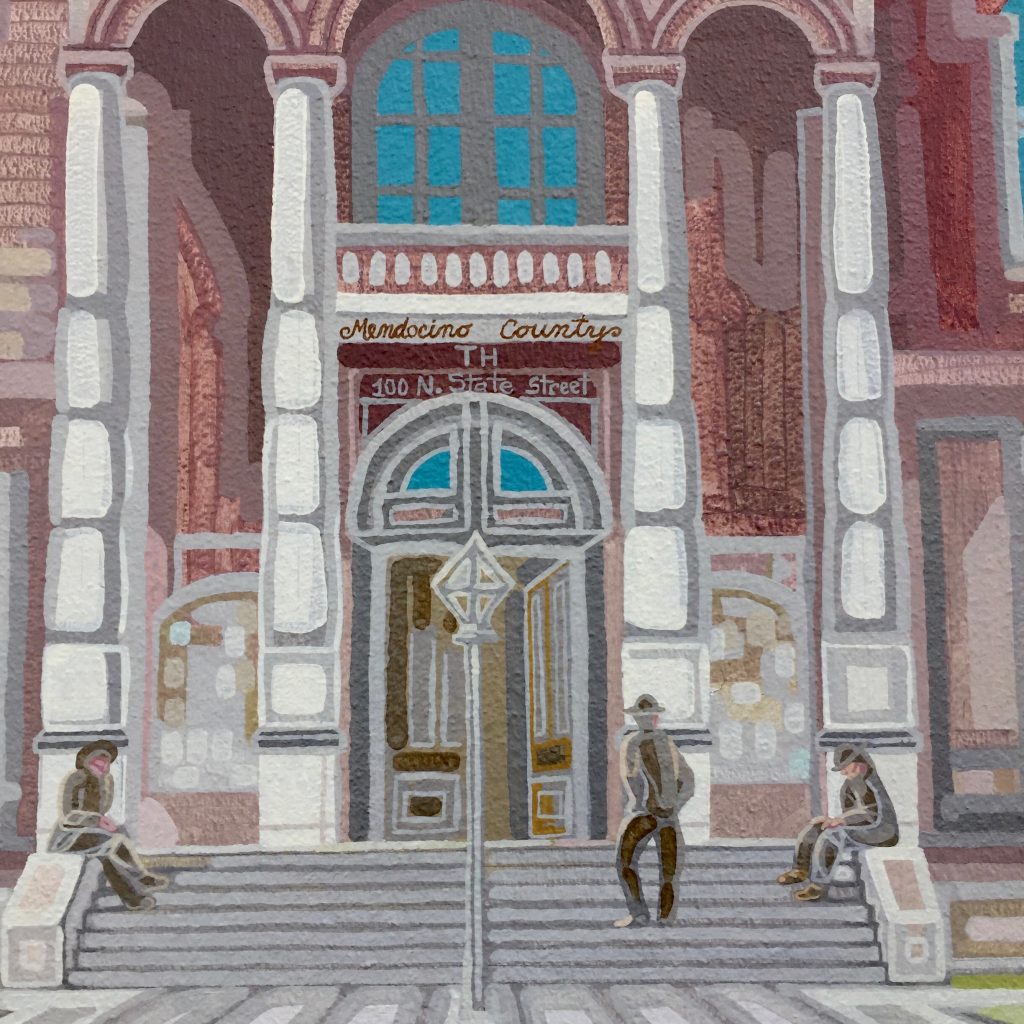

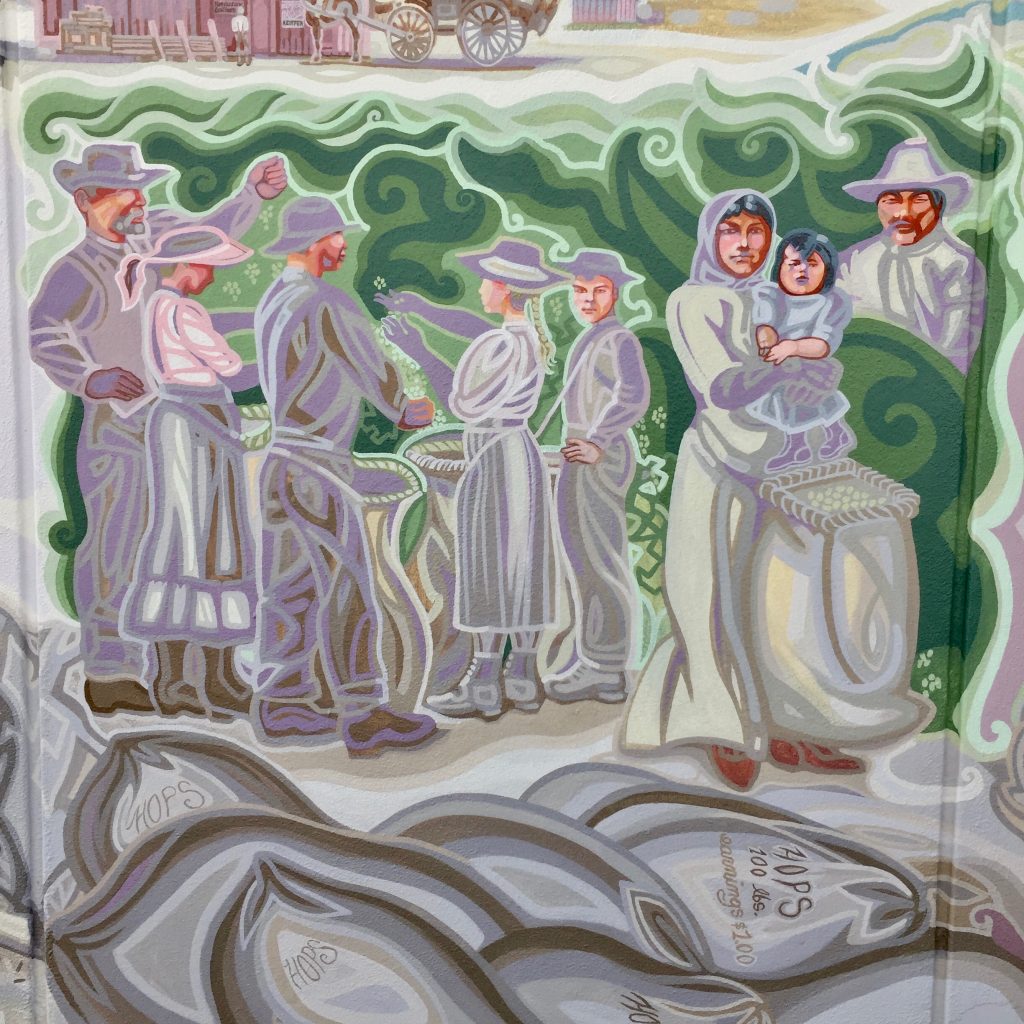
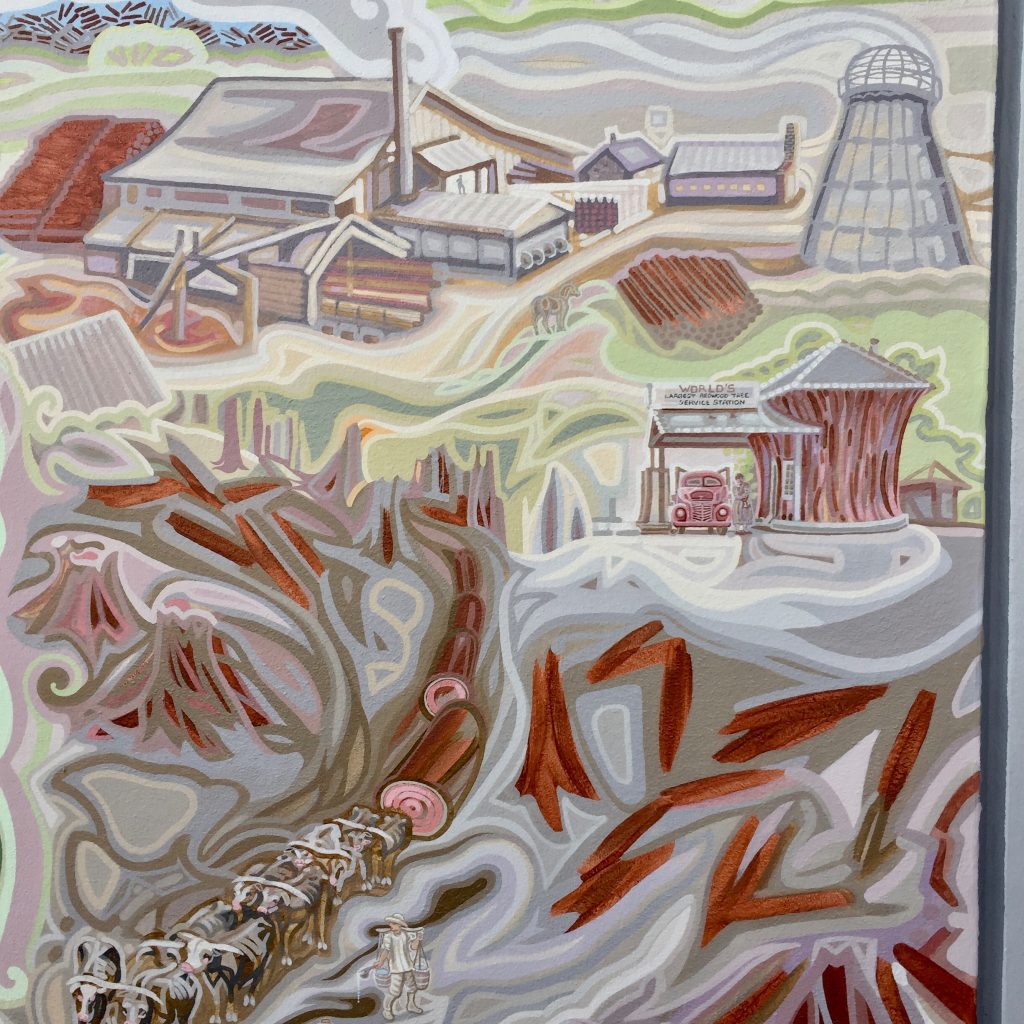
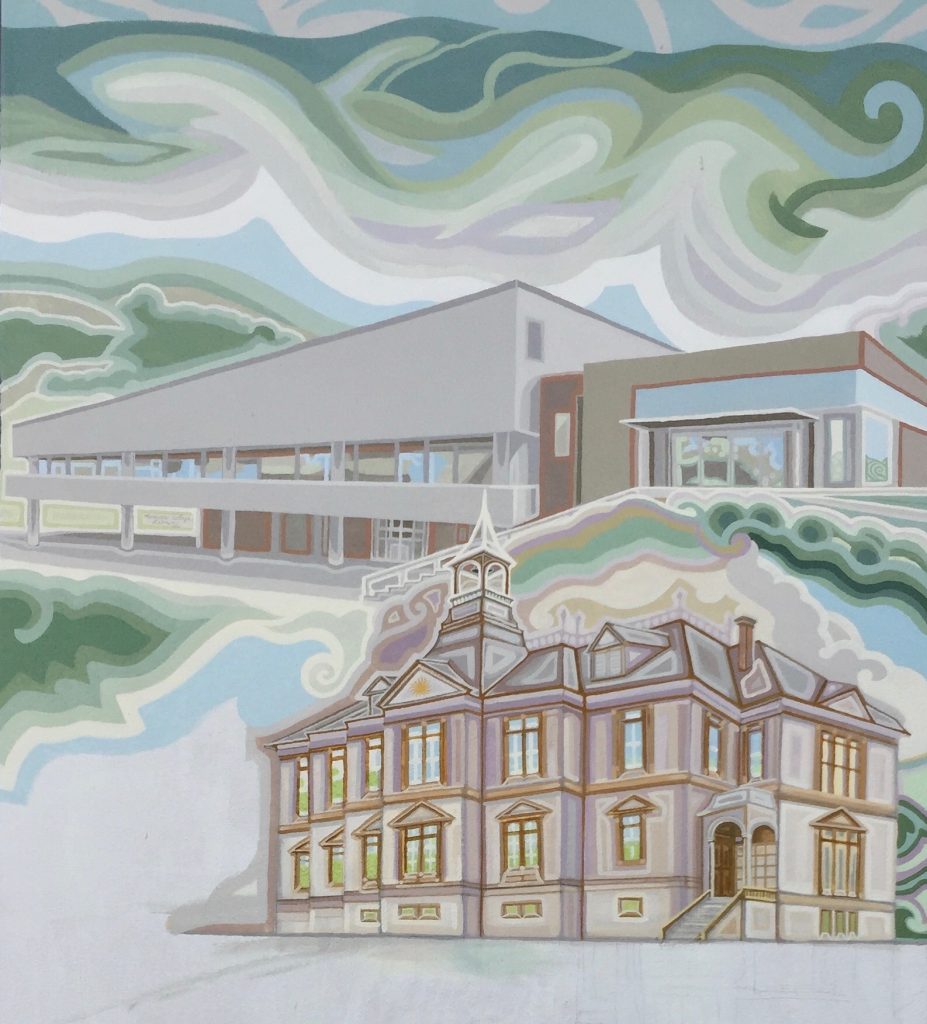
Panel summaries:
Click on the list or scroll down for the quick view.
After each summary, a PANEL BUTTON links to all the stories and portraits of real people in that panel.
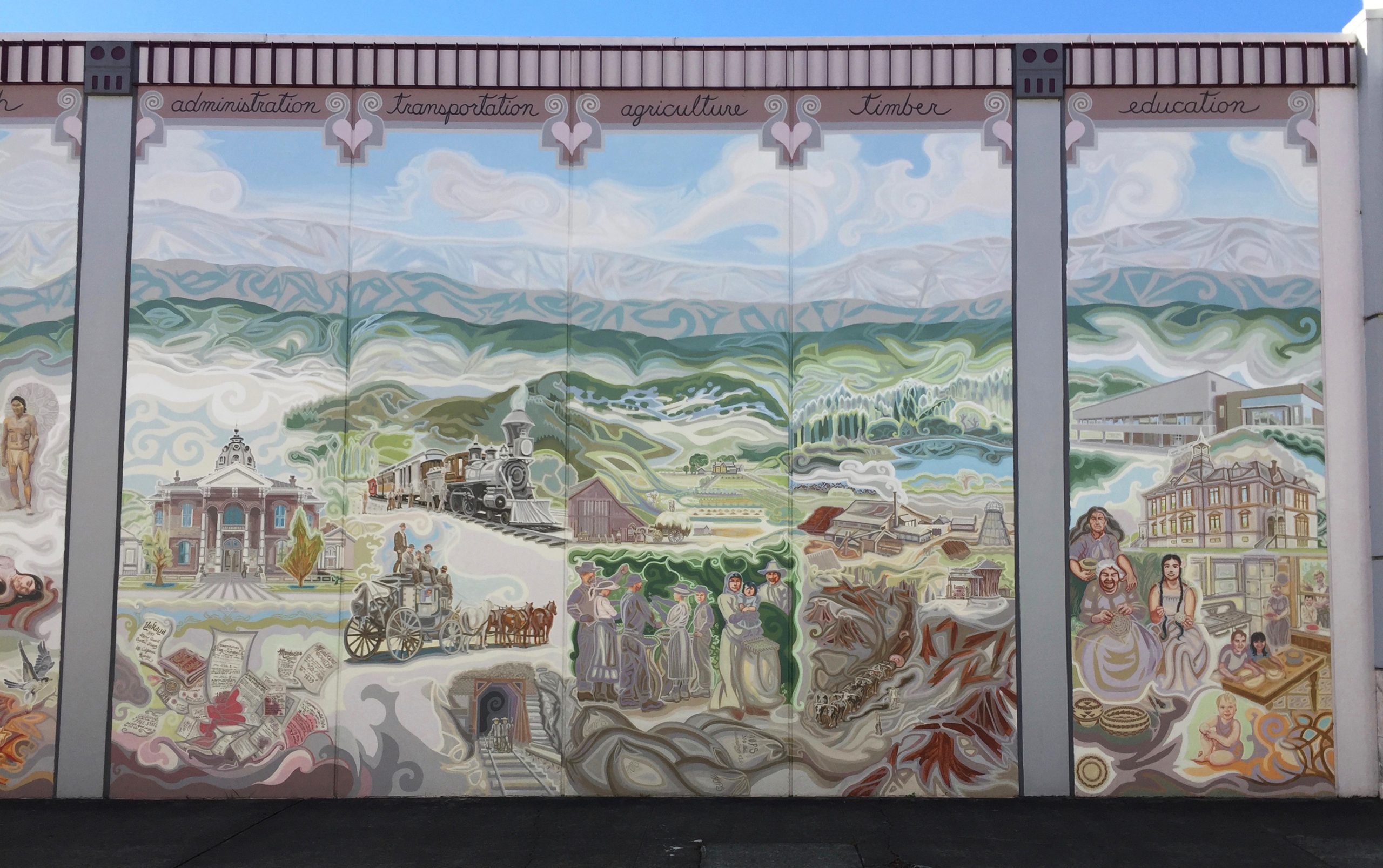
SECTION THREE tells how, between 1850 and 1910, Mendocino County and the Ukiah Valley saw the growth of government, transportation, agriculture and logging, plus education in the extra fifth panel.
panel 10 administration
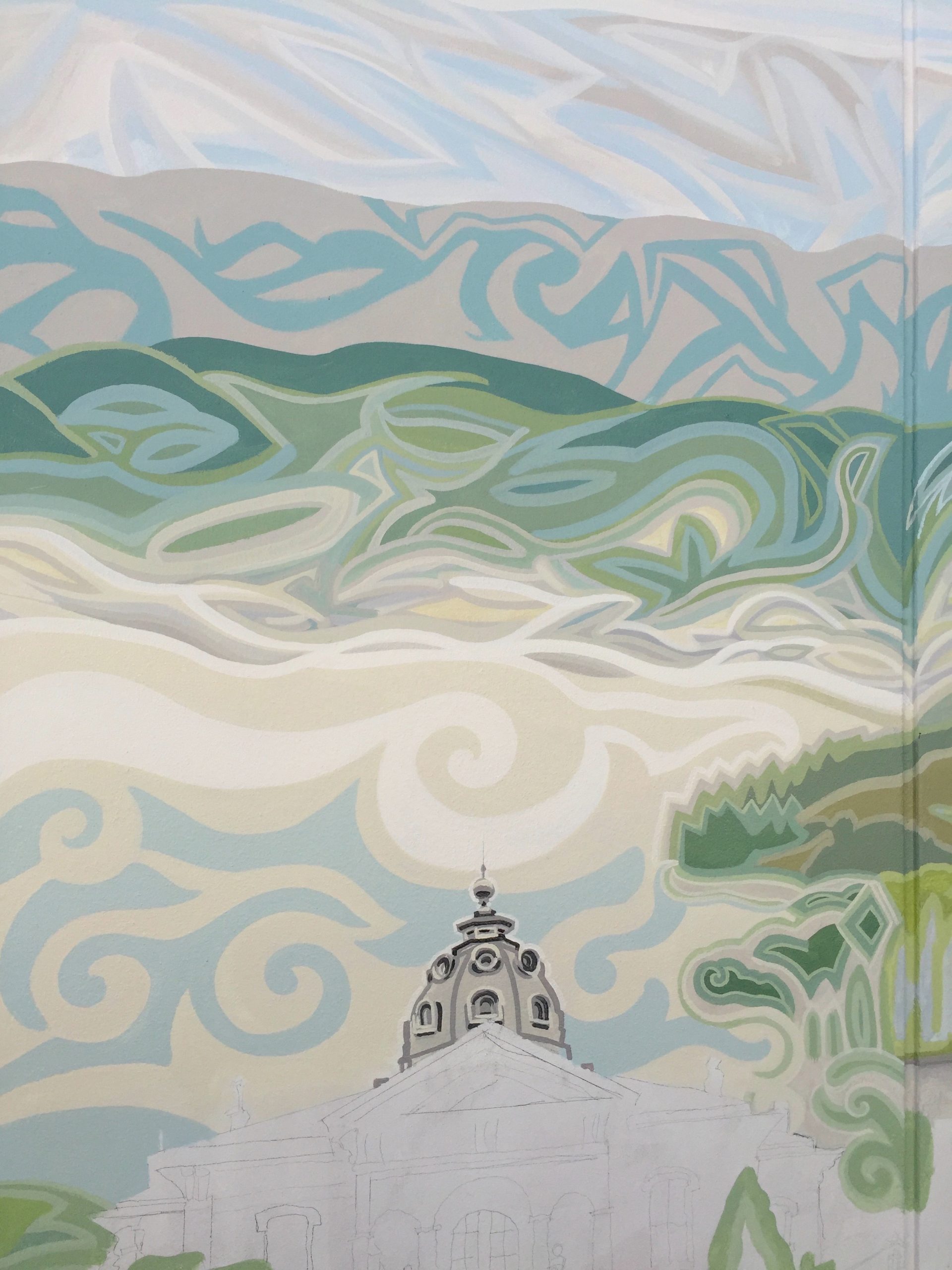
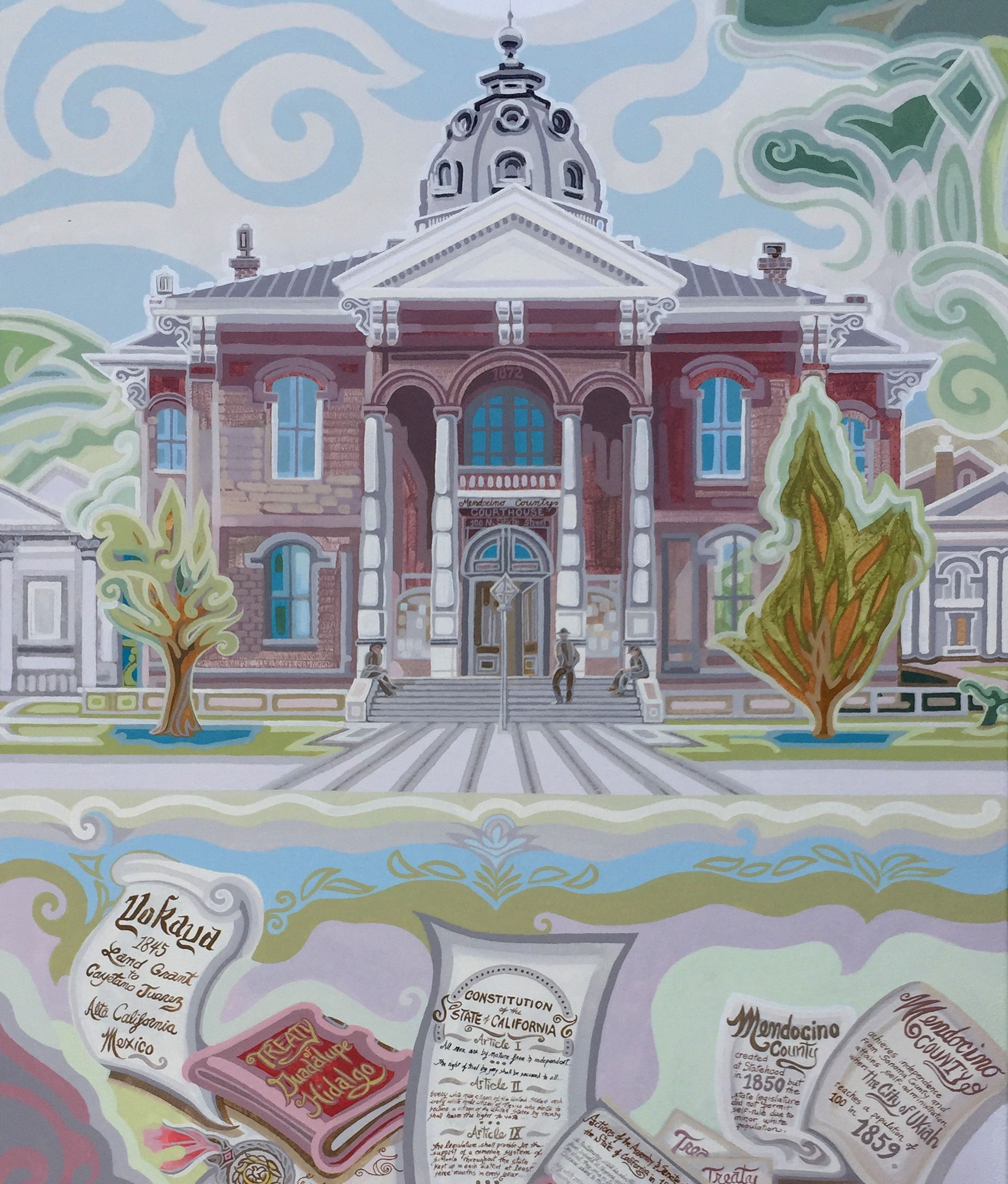
Built in 1872, the beautiful Mendocino County Courthouse is painted under a decorative sky representing the harmony of justice, the goal toward which our imperfect institutions strive. The visual trick of that sky is that it is also part of the hills above it.
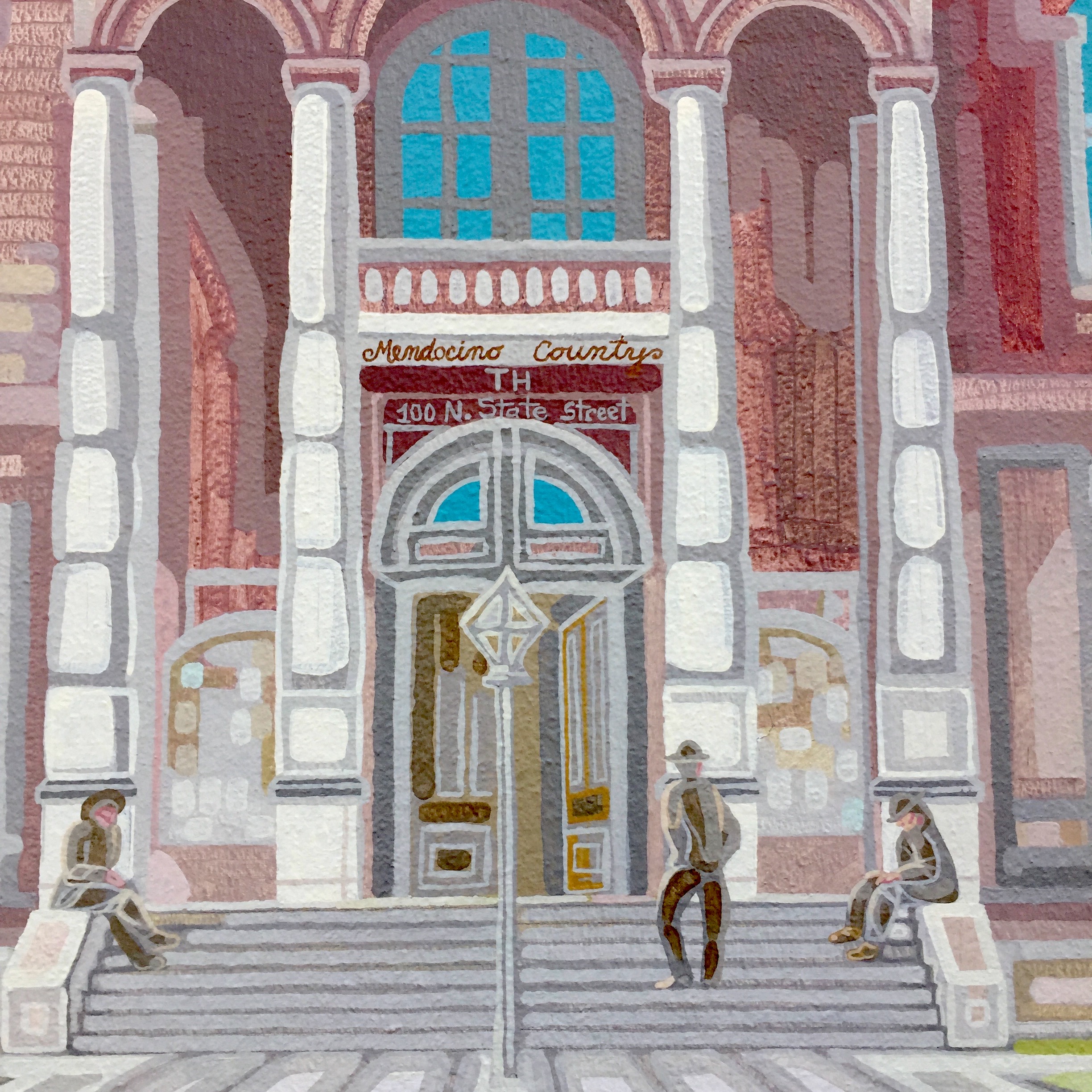
Notice the bulletin boards for posting public notices. Also, I had painted the address but not yet finished the word “COURTHOUSE.” All you see here are the letters “TH” because I wasn’t finished.
Why do you letter from the middle out? So you get the word centered in its zone.
The end of the Mexican-American War in 1848 brought California into the United States. Almost immediately, the most massive migration in the country’s history brought European/American settlers to California in great numbers following the 1849 Gold Rush.
California entered the Union as a free (anti-slavery) state in 1850, but largely because African slaves were so expensive, the importation of new slaves was illegal, and the state already had de facto slavery with its Native population.
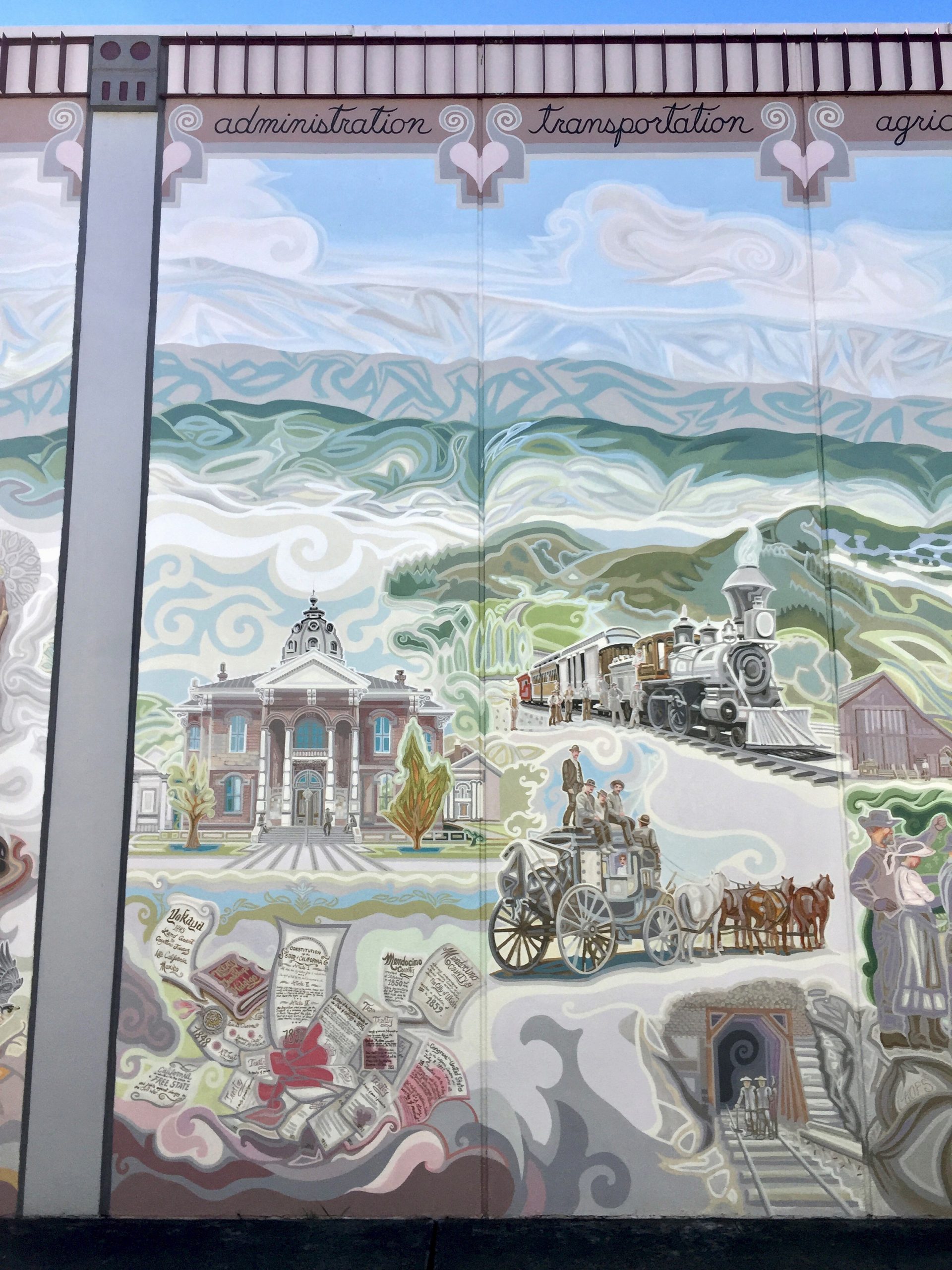
Find all the stories and those crucial documents on the panel page:
This half-century from 1850-1900 is one of tremendous change. The next panel addresses transportation, and contains the smallest portrait I have ever painted!
panel 11 transportation
The Ukiah valley and inland Mendocino County in general was isolated from 19th century mass transportation modes.While the coast was connected to San Francisco by steamer, the rail line terminated in Petaluma. To reach Ukiah one walked, rode a horse or travelled by stagecoach.
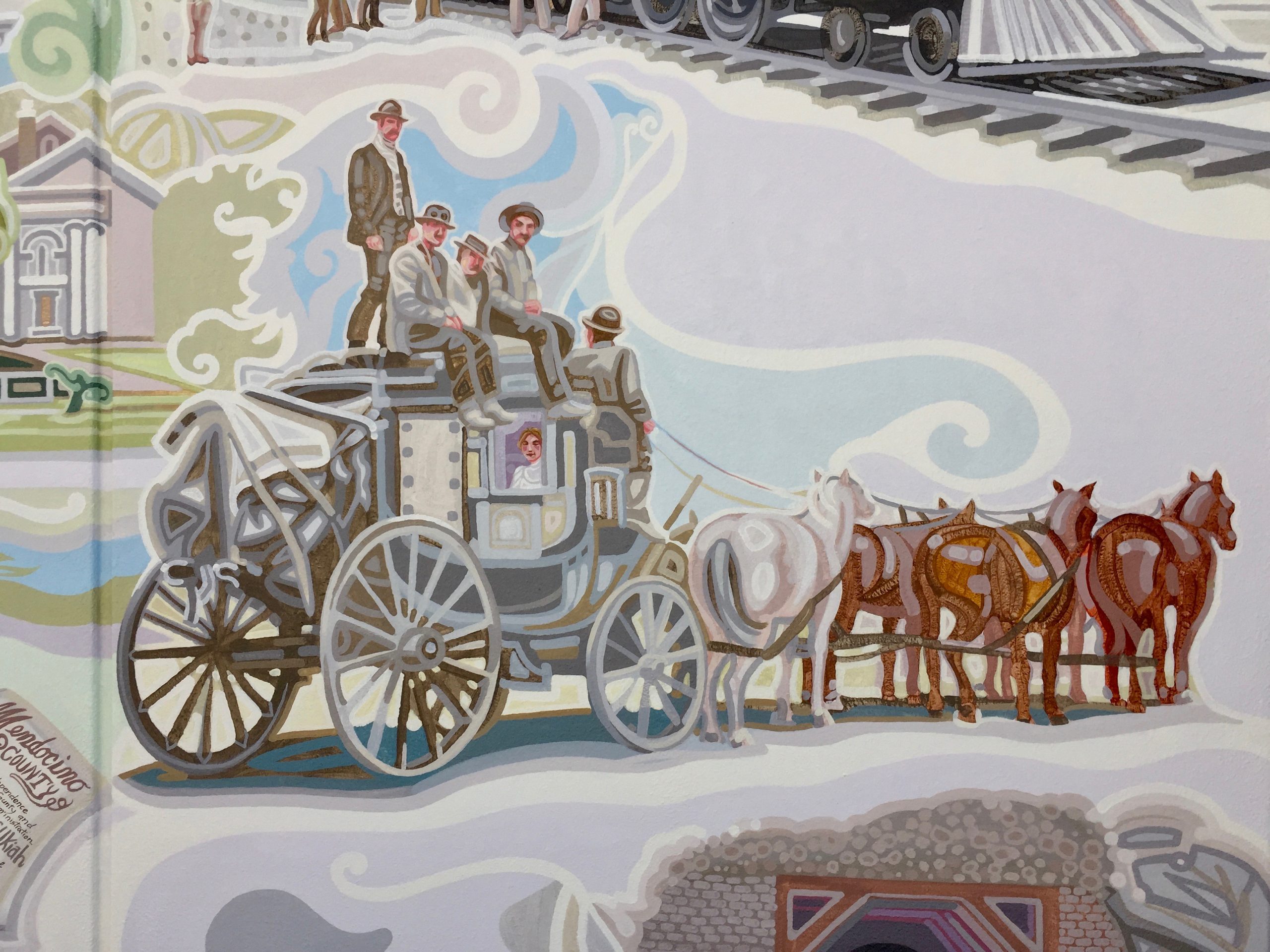
This changed in 1889, when the San Francisco and North Pacific Railroad completed its line from Petaluma to Cloverdale to Ukiah.
I painted the arrival of the first passenger car, from a photo of the actual occasion.
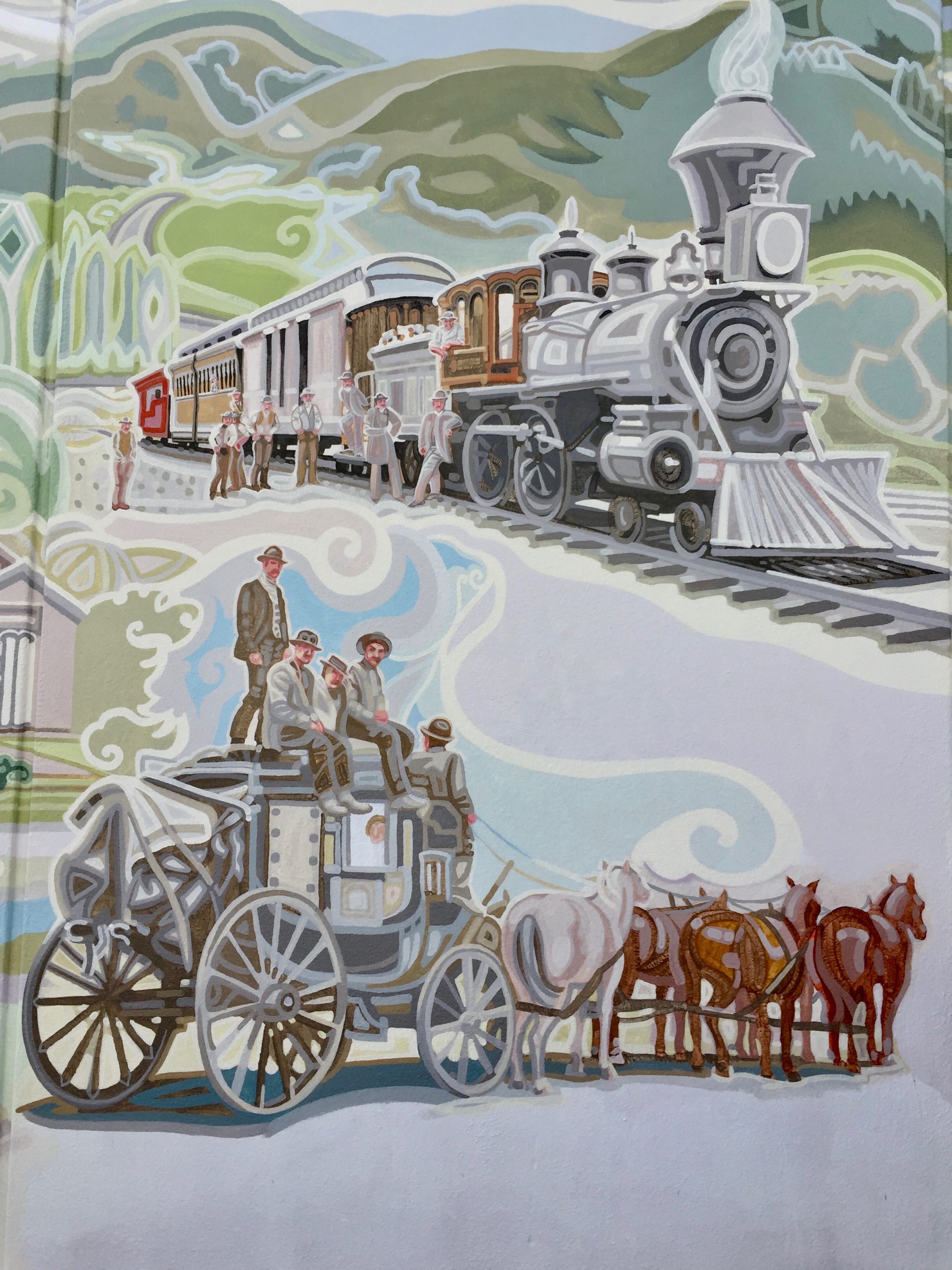
The base of the panel shows a tunnel that still exists on the route of the Skunk Train, much of which was dug by Chinese laborers. They were given the jobs too dangerous for the union men.
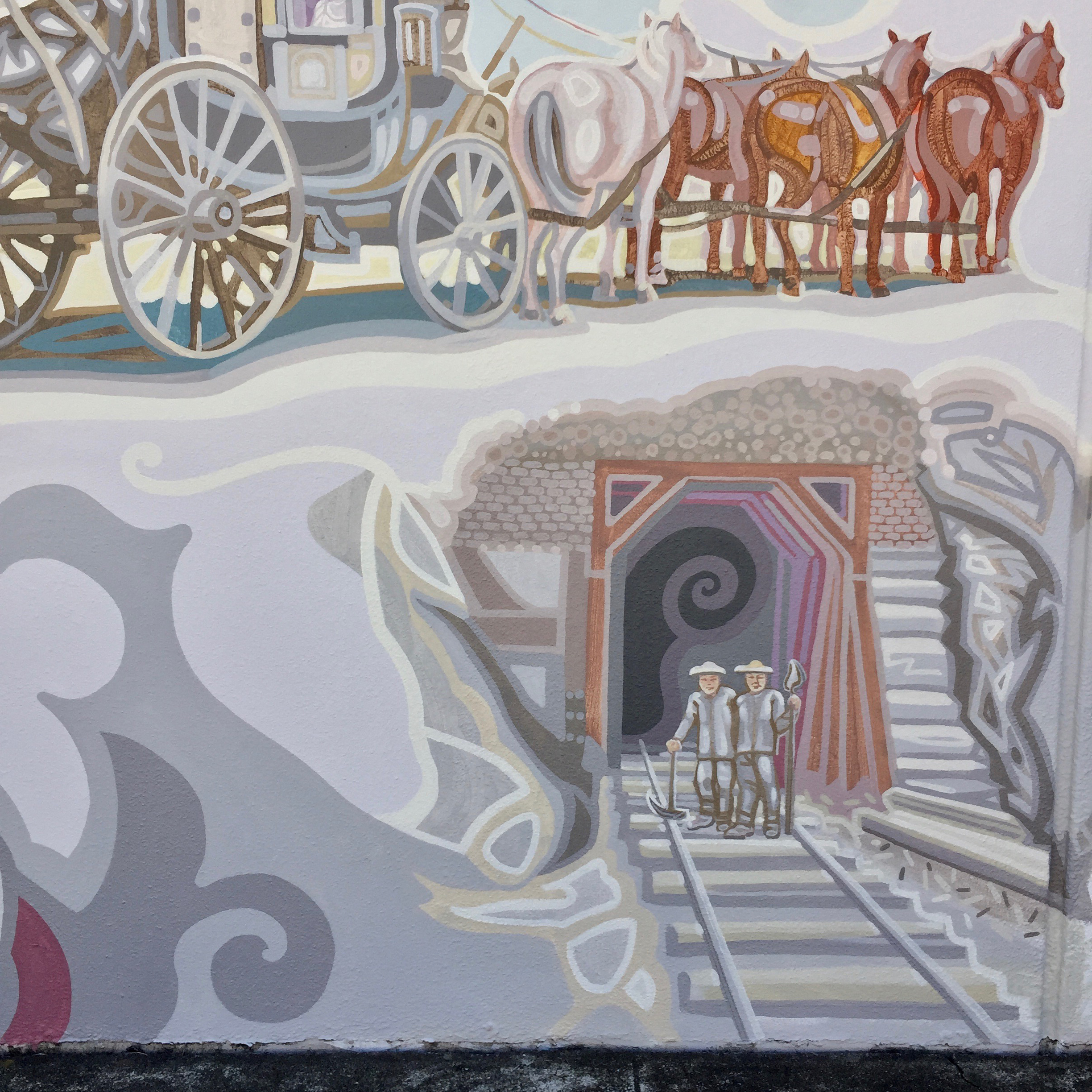
Transportation and agriculture are intertwined, growing at the same time in Mendocino County. Notice in the photo below how compositional elements in one panel lead into those of the next, across the crack that divides them.
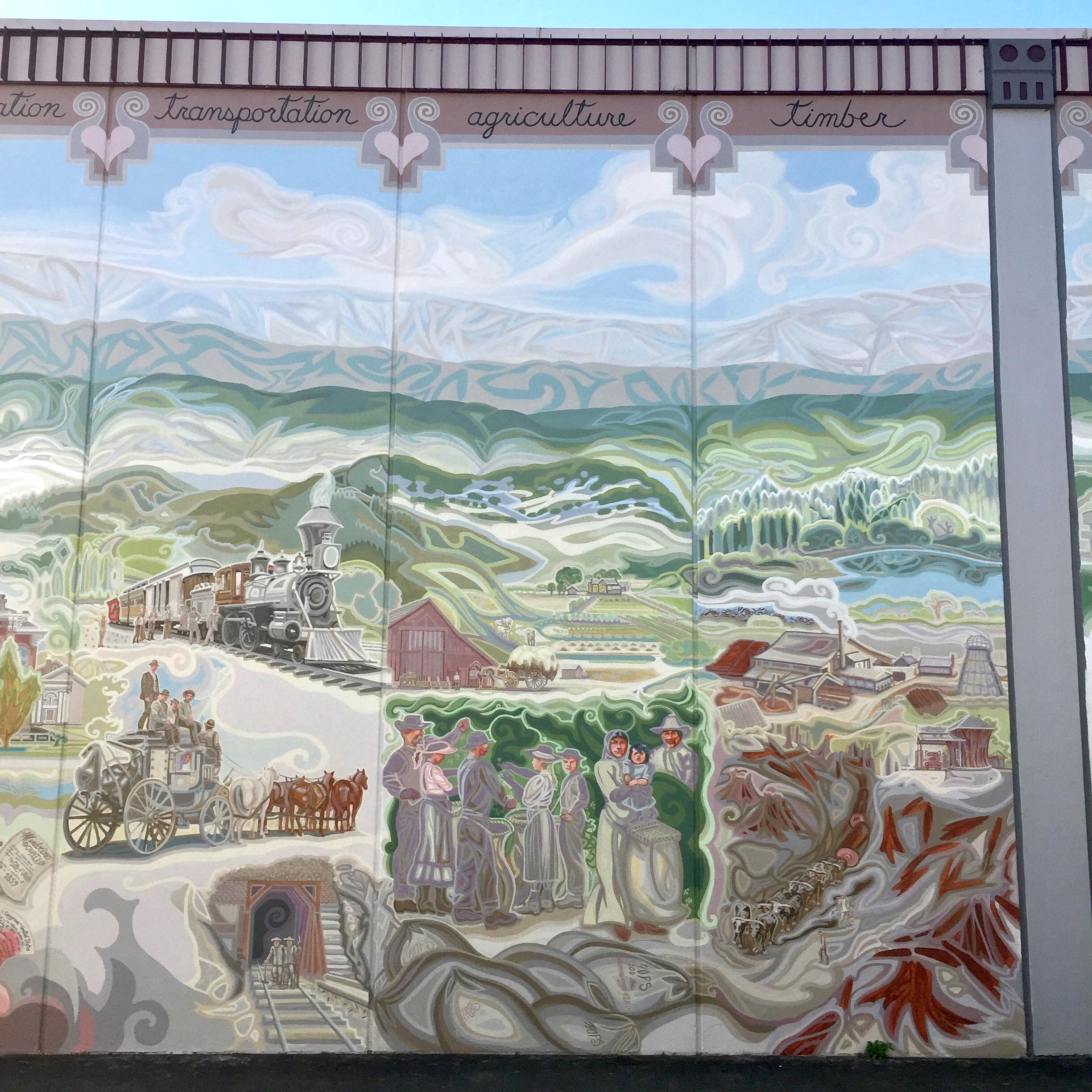
Find all the stories (and my tiniest portrait!) on the panel page:
panel 12 agriculture
As the Gold Rush faded, California increasingly became productive in agriculture.
Pears, grapes and prunes were major crops, along with sheep and cattle ranching.

A lesser known crop is the beer-flavoring flower of the hops plant, which flourished in our climate. Agricultural work is seasonal and in August, entire families left their other homes, work or school and went into the sweltering fields to earn extra money.
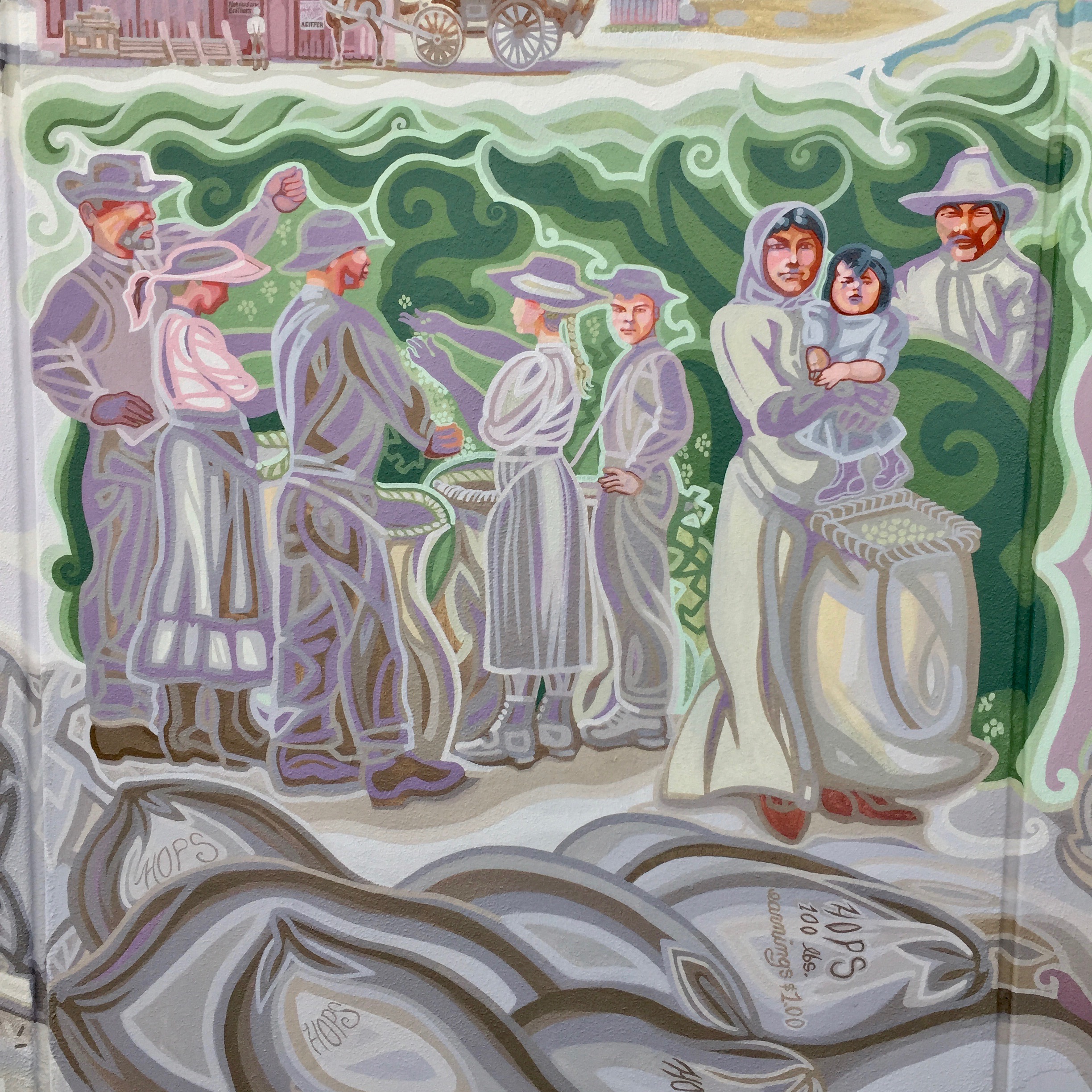
I use a very stylized, decorative style to portray subject matter that is still also realistic.



Find all the stories on the panel page:
panel 13 timber
The lumber boom in Mendocino County was at its height in the 1940s, prompting major growth in Ukiah, but my imagery is from the turn of the century.

The lower scene shows a skid road where felled redwood trees were slid down a burned out hillside into the ravine. Bull teams dragged the huge logs along a track made slick by Chinese water slingers, as you see here standing above the foreman with his two water buckets on a yoke. This was painted from a photo by the eminent local photographer A.O. Carpenter, father of painter Grace Hudson.
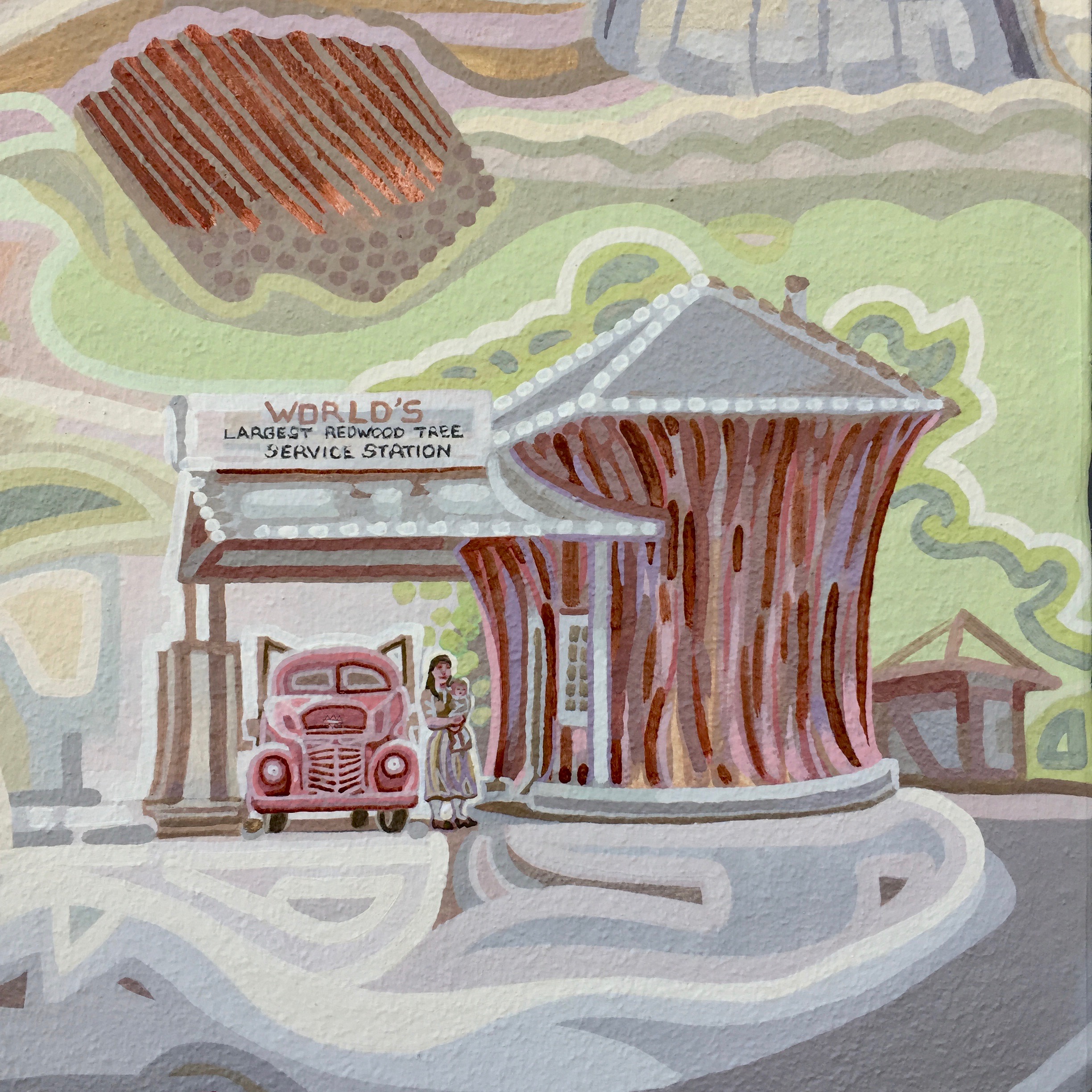
Find out who the portrait subjects are – a woman, a baby, and a truck – on the panel page:
I love to bring history to life in paint.
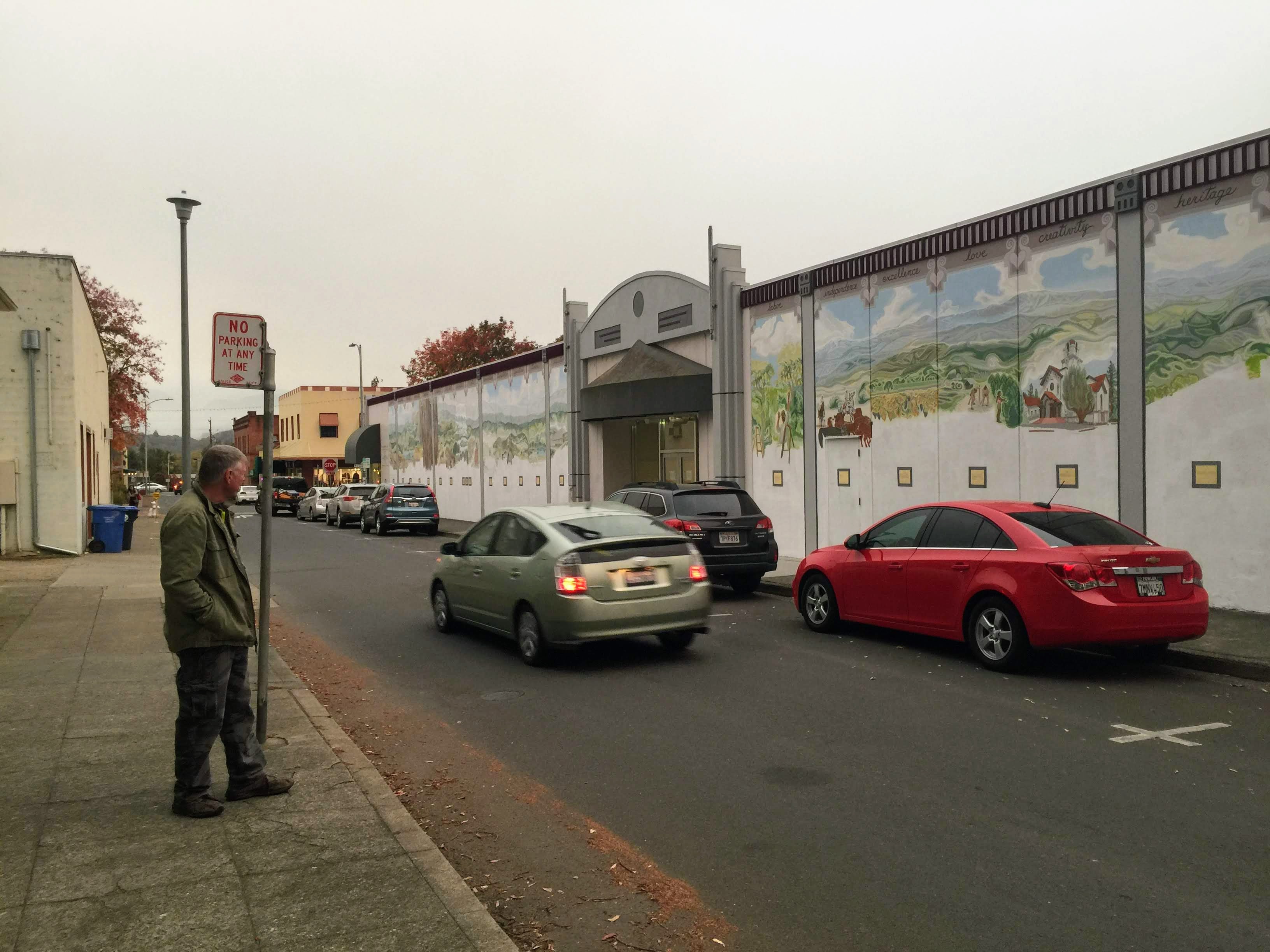
The two panels flanking the Conference Center’s north entrance represent two subjects I intentionally paired as necessary components of a thriving society: education and labor.
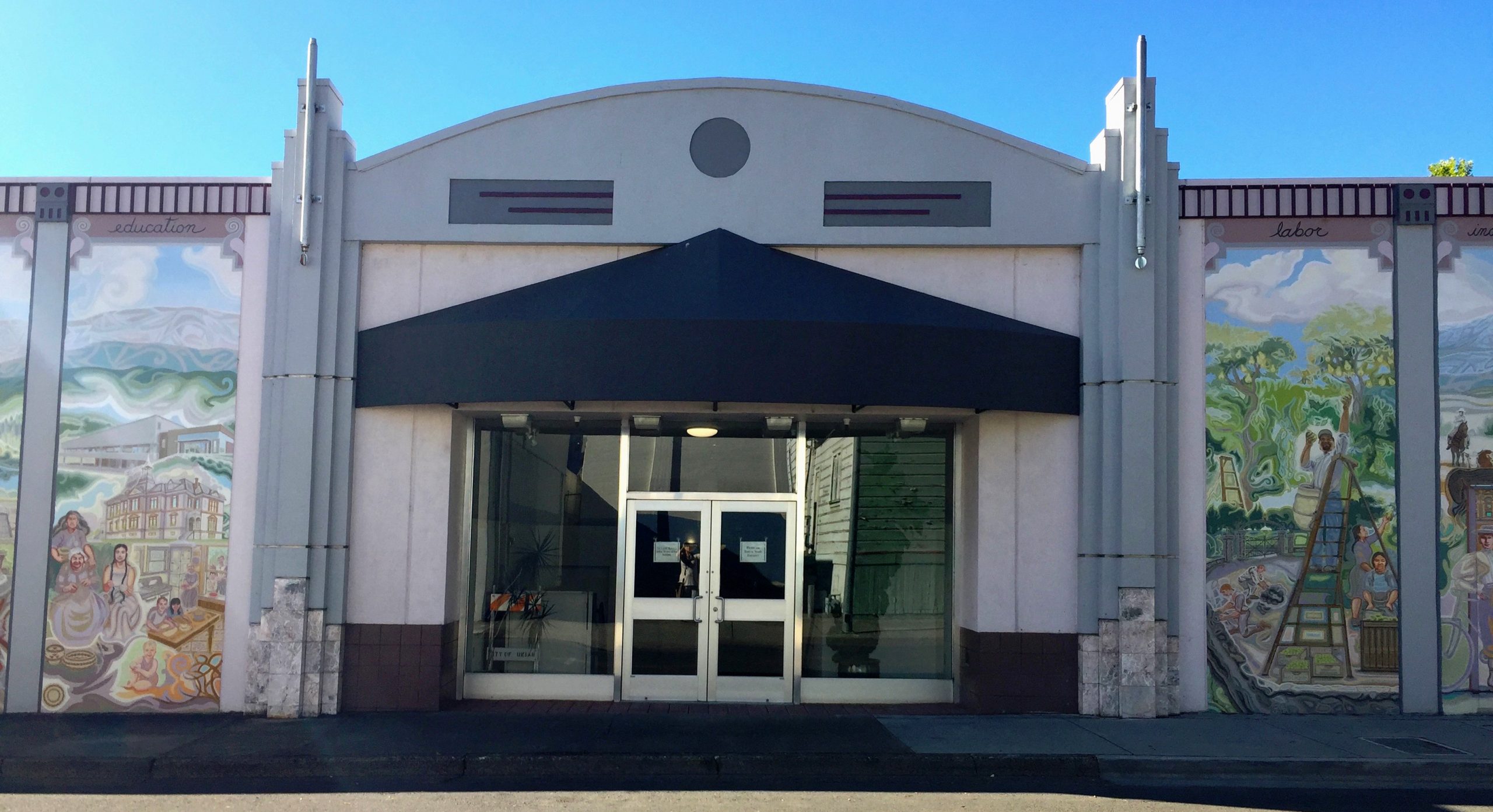
panel 14 education
In the “education” panel, you will see the old and the new in architecture: the Library of Mendocino College, 1983, and the Ukiah Grammar School, 1872.
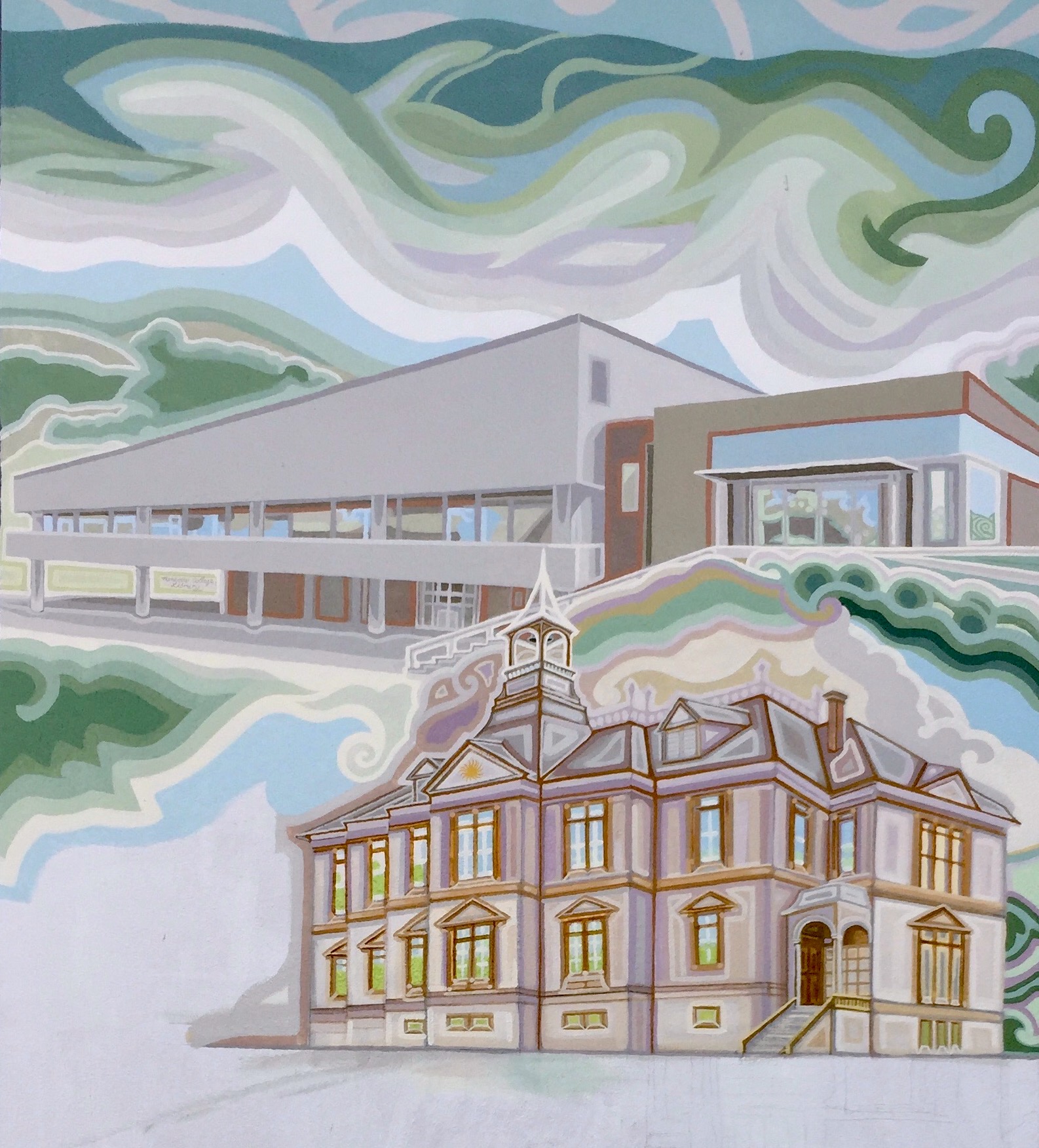
I use these iconic buildings and scenes containing historic and contemporary portraits to illustrate five stages of education:
- Higher education (the college library)
- Primary and secondary education (the grammar school)
- Advanced skills (Pomo basket weavers)
- Essential practical knowledge taught at home (the kitchen scene)
- The foundation of education: self-discovery through the senses, seen as a toddler at one with nature.
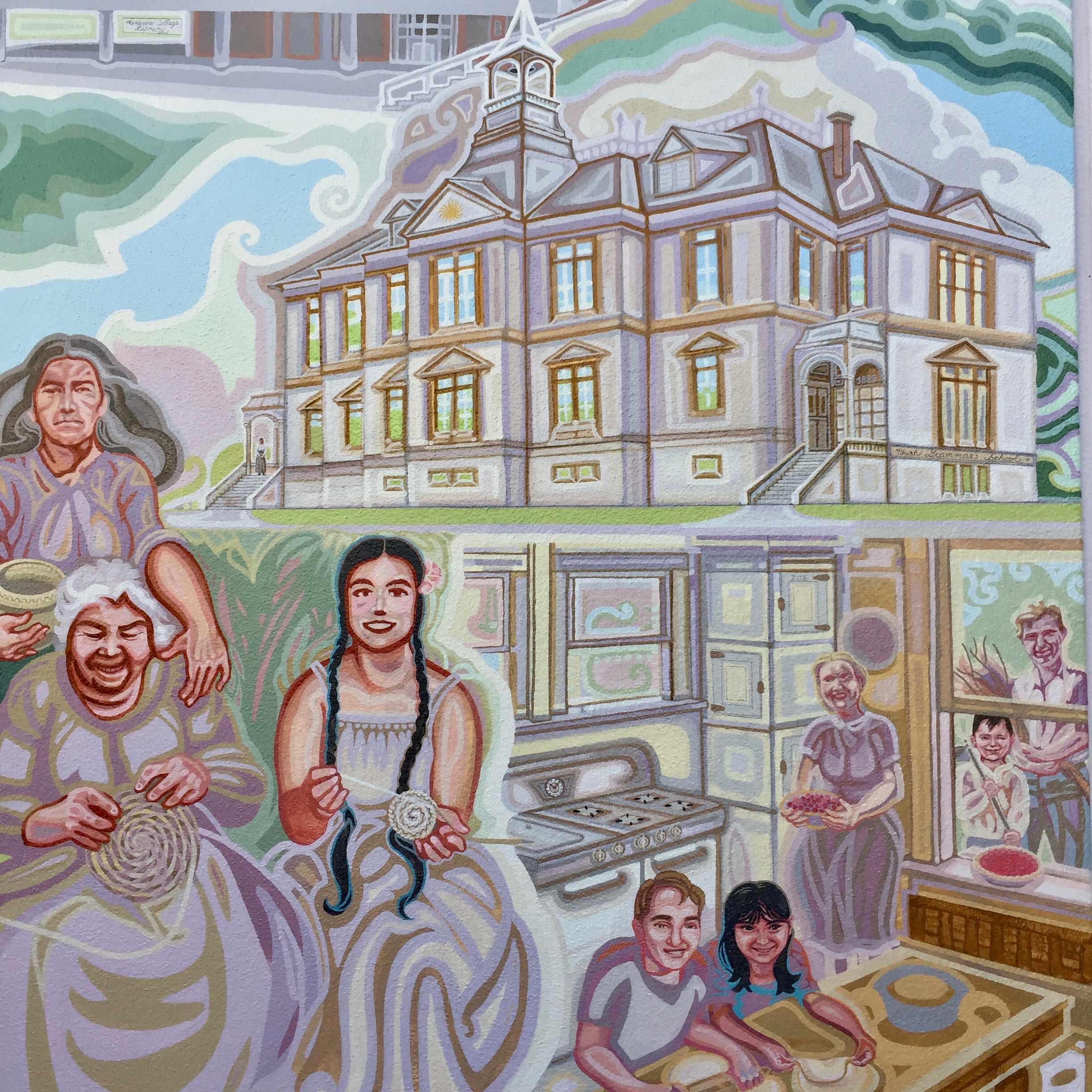

To illustrate the passing on of advanced skills I painted portraits of renowned Pomo basket weavers Elsie Allen, her groundbreaking mother Annie Burke, and her grand-niece Susan Billy.

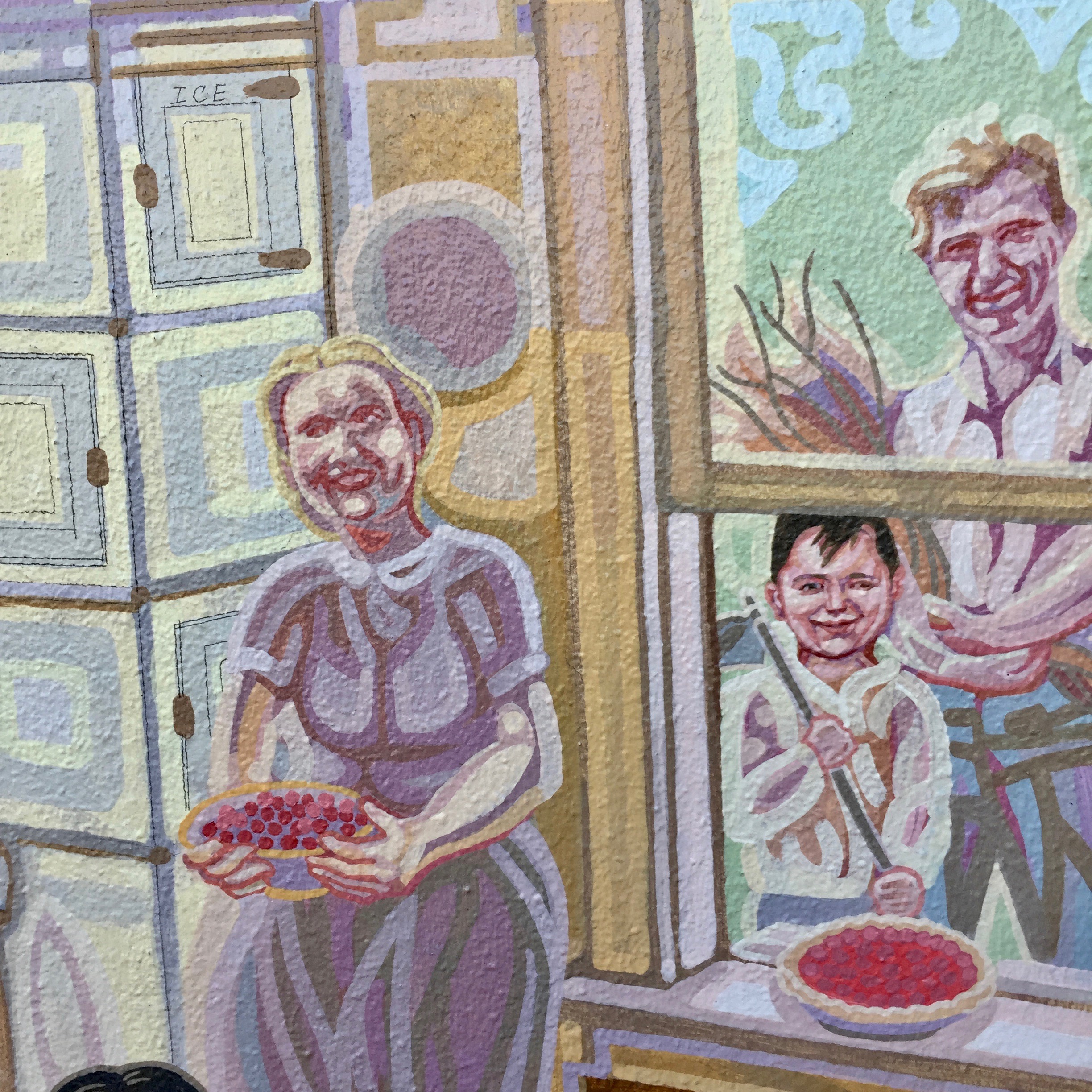
The kitchen scene shows practical skills being taught by well-loved local cherry farmers George and Ella Butler. There are more portrait surprises here that involve the warping of time. And the toddler is someone very dear to me.


Find all the stories on the panel page:
Previous…
SECTION TWO
Up Next…
SECTION FOUR